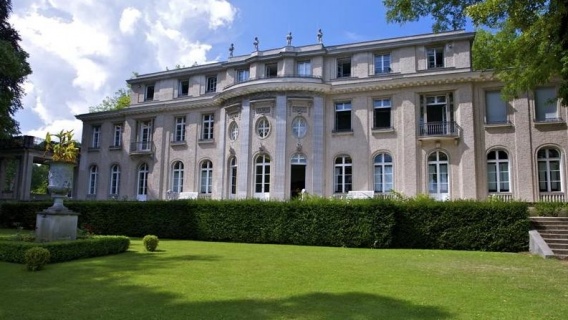The Wannsee conference was held here at 56–58 Am Grossen Wannsee.
Seventy years ago this month – on 20 January 1942 to be precise – one of the most infamous meetings of WW2, indeed of the 20th century, was held on the shores of the Wannsee on the outskirts of Berlin. And, as I know from the many times that I have been asked about Wannsee, large numbers of people still think this was the moment that the Nazis’ ‘Final Solution’ was decided upon.
It wasn’t. And the reasons why this mistake is often made are interesting.
The fact is that the fifteen senior Nazi functionaries who attended the Wannsee conference were second tier figures in the Nazi state. Goering wasn’t there, Himmler wasn’t there, crucially Hitler wasn’t there. Mind you, it wasn’t surprising, of course, that Hitler wasn’t there. He hated committee meetings of any kind. As a result the German cabinet hadn’t met since 1938.
Wannsee was held to decide on a whole series of potentially contentious issues which had arisen because elsewhere much more important decisions about the fate of the Jews had already been taken. These decisions were important – like what was the exact definition of a ‘Jew’ – but they were not fundamental. Much more important to the history of the Nazis so-called ‘Final Solution’ of the Jewish ‘problem’ were the discussions that Hitler held with Himmler in December 1941 and the conversations Hitler had with other senior Nazi figures immediately after Pearl Harbour.
So why do people need to think that Wannsee was the moment the extermination of the Jews was decided upon by the Nazis? Well, because I think there is a natural human desire to want to believe that the most appalling crime in history was decided upon at a definite moment. It lends certainty to our understanding. Trouble is, the decision making process of the ‘Final Solution’ was not like that. Yes, of course, Hitler was ultimately responsible, but the process was piecemeal and cumulative. In a word – it’s ‘complicated’.
 Twitter
Twitter






